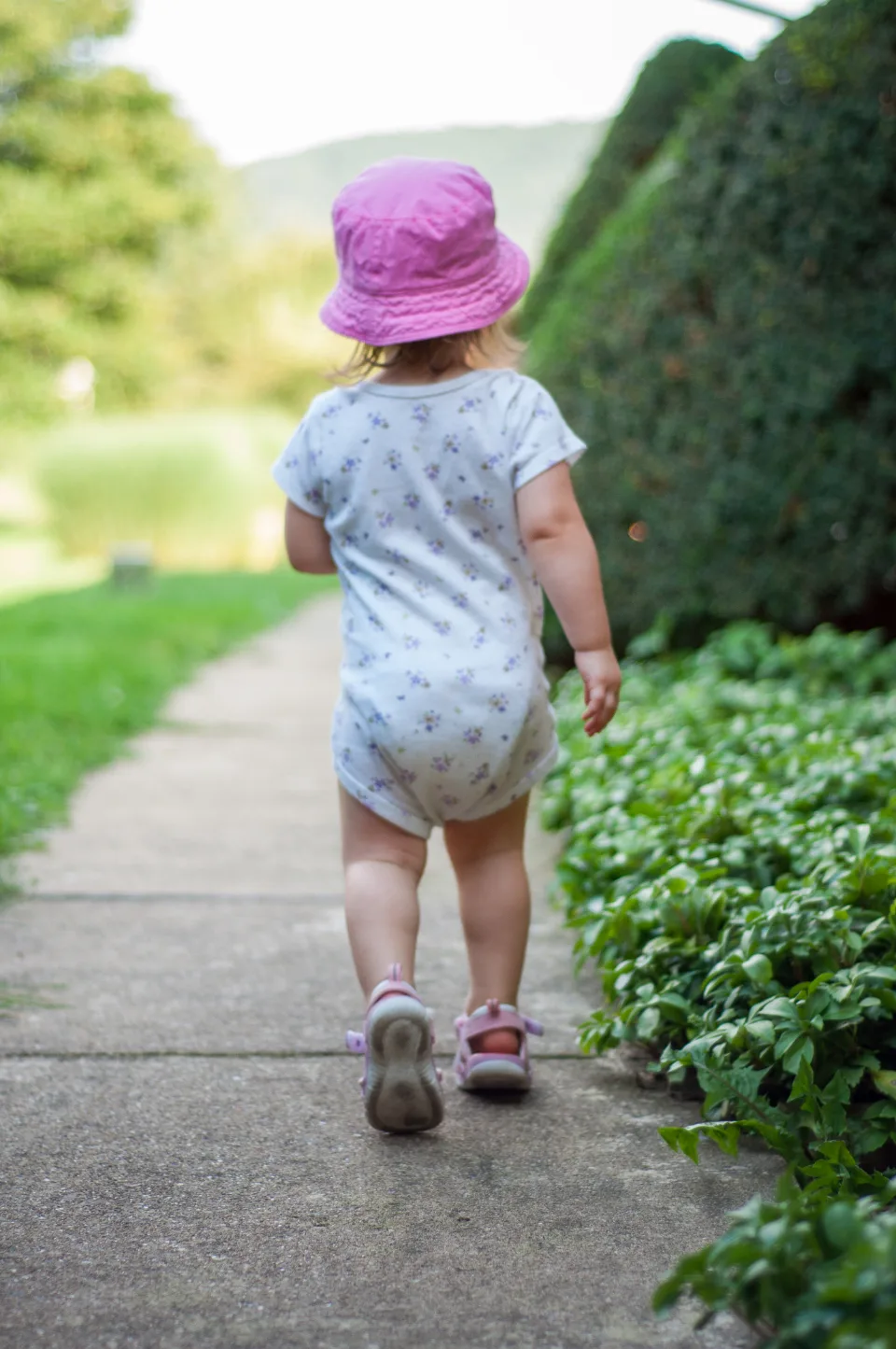
Introduction: The Crucial Role of Play in Child Development
Play is not merely a source of amusement for children; it is an essential component of their overall development. Through play, children explore their world, experiment with new ideas, and acquire crucial skills across various domains. Engaging in playful activities fosters physical growth and coordination, ignites cognitive curiosity and problem-solving abilities, and nurtures social and emotional intelligence.
From the earliest stages of infancy to the cusp of childhood, play serves as a powerful engine driving holistic development. In the initial months, playful interactions like peekaboo and gentle bouncing stimulate sensory pathways and lay the foundation for motor skills. As babies transition into toddlers, play takes on new forms, with exploration and object manipulation taking center stage. Building towers, stacking cups, and engaging with toys of various textures all contribute to cognitive growth and fine motor development.
As children enter the preschool years, the power of play becomes even more evident. Pretend play flourishes, allowing children to step into different roles, experiment with social interactions, and develop their emotional understanding. Building forts, creating imaginary worlds, and engaging in collaborative games all contribute to social competence, emotional regulation, and creative expression.
This article delves into the world of play, offering parents and caregivers a diverse range of age-appropriate activities to support their child’s development at every stage. From simple sensory experiences for newborns to imaginative games for toddlers and preschoolers, the following sections provide a roadmap for harnessing the power of play to nurture well-rounded, thriving children.
Play Activities by Developmental Stage: A Guide for Parents and Caregivers
Understanding how play evolves alongside a child’s developmental milestones is crucial for providing ageappropriate activities that optimize their learning and growth. This section delves into specific play ideas tailored to different stages, drawing upon expert insights and research-backed practices.
A. Newborn to 6 Months: Sensory Exploration and Motor Development
During this early stage, infants primarily learn through their senses and motor experiences. Play activities should focus on stimulating their vision, hearing, touch, and movement.
- Tummy Time: Placing babies on their stomachs while awake helps strengthen neck and back muscles, crucial for future motor skills. Enhance tummy time by placing colorful toys within reach or engaging in playful interactions like singing and talking.
- Sensory Play: Introduce a variety of textures through safe objects like soft fabrics, textured balls, and rattles. This stimulates tactile development and encourages exploration.
- Simple Mobiles and High-Contrast Images: Black and white mobiles or images with contrasting colors capture infants’ attention and promote visual development.
- Singing and Talking: Regularly engage in conversations and sing songs to your baby. This exposes them to language and fosters early communication skills.
- Gentle Movement: Rocking, bouncing, and swaying provide vestibular stimulation, which contributes to balance and coordination.
B. 6 to 12 Months: Object Manipulation and Cause-and-Effect Learning
As babies gain more control over their movements, they become increasingly curious about exploring their environment and manipulating objects.
- Interactive Games: Peekaboo, patacake, and other interactive games delight babies and encourage social interaction and object permanence understanding.
- Stacking and Nesting: Provide cups, blocks, or nesting toys to encourage problem-solving skills and hand-eye coordination.
- Ball Play: Rolling, throwing, and bouncing balls of different sizes and textures enhance motor skills and introduce concepts like cause and effect.
- Exploring Safe Household Objects: Allow babies to safely explore everyday items like wooden spoons, plastic containers, and cardboard boxes. This stimulates their curiosity and encourages creativity.
- Crawling Obstacle Courses: Create safe obstacle courses with pillows, blankets, and tunnels to encourage crawling and motor development.
C. 12 to 18 Months: Language Development and Pretend Play
Language skills blossom during this stage, and pretend play begins to emerge.
- Reading and Pointing: Regularly read books to your child, pointing to pictures and naming objects. This builds vocabulary and fosters a love of reading.
- Building and Stacking: Provide blocks, Legos, or other construction materials to encourage creativity and problem-solving skills.
- Playing with Dolls and Stuffed Animals: Encourage pretend play by providing dolls, stuffed animals, and other props. This allows children to act out scenarios and explore emotions.
- Simple Pretend Play: Engage in simple pretend play scenarios with your child, such as pretending to feed a doll or talk on the phone.
- Music and Movement: Sing songs, dance to music, and encourage your child to move their body. This promotes coordination, rhythm, and self-expression.
D. 18 Months to 2 Years: Social Interaction and Problem-Solving
Social interaction and problem-solving skills take center stage during this period.
- Parallel Play: Provide opportunities for your child to play alongside other children, even if they are not directly interacting. This fosters social awareness and encourages sharing.
- Puzzles and Shape Sorters: Introduce simple puzzles and shape sorters to challenge your child’s cognitive skills and hand-eye coordination.
- Sensory Materials: Play dough, sand, and water play offer opportunities for open-ended exploration and sensory stimulation.
- Building and Construction: Encourage more complex building and construction activities, fostering creativity and spatial awareness.
- Pretend Play with More Elaborate Scenarios: Encourage more complex pretend play scenarios, such as playing house or going to the store. This promotes social skills, language development, and emotional understanding.
E. 2 to 3 Years: Imagination and Creativity Flourish
Imagination and creativity blossom during this stage, and children engage in increasingly complex and imaginative play.
- Dress-Up and Role-Playing: Provide costumes and props to encourage imaginative play and role-playing. This allows children to explore different identities and social roles.
- Building Forts and Playhouses: Encourage children to build forts and playhouses using blankets, pillows, and cardboard boxes. This fosters creativity and problem-solving skills.
- Arts and Crafts: Provide opportunities for creative expression through painting, drawing, sculpting, and other artistic activities.
- Outdoor Play: Encourage outdoor play with swings, slides, climbing structures, and other equipment. This promotes physical activity, coordination, and social interaction.
- Simple Board Games and Card Games: Introduce simple board games and card games to teach turn-taking, cooperation, and basic rules.
By providing ageappropriate play activities and following the child’s lead, parents and caregivers can harness the immense power of play to foster wellrounded development and create a joyful and enriching childhood.
DIY Toys and Sensory Play: Engaging Activities for Every Stage
While commercially available toys can be valuable tools for play, some of the most engaging and enriching play experiences can be created using simple, everyday materials found around the home. DIY toys and sensory play activities not only spark creativity and imagination but also offer opportunities for customization and open-ended exploration.
DIY Toys:
- Sensory Bottles: Fill empty plastic bottles with various materials like rice, beans, glitter, or water beads. These bottles provide visual and auditory stimulation and can be used for shaking, rolling, or simply observing.
- Sock Puppets: Transform old socks into playful puppets by adding buttons, yarn, or fabric scraps. Sock puppets encourage imaginative play and storytelling.
- Cardboard Box Creations: Cardboard boxes can be transformed into countless playthings, including cars, houses, castles, and even spaceships. This encourages creativity, problem-solving, and gross motor skills.
- Homemade Play Dough: Create your own play dough using simple ingredients like flour, salt, water, and food coloring. This allows for sensory exploration and open-ended creativity.
- Nature Mobiles: Collect natural materials like leaves, twigs, and pinecones to create beautiful and stimulating mobiles. This fosters an appreciation for nature and provides visual stimulation.
Sensory Play Activities:
- Sensory Bins: Fill a bin with materials like rice, beans, sand, or water beads. Hide small toys or objects within the bin for children to discover. This provides tactile stimulation and encourages exploration.
- Finger Painting: Finger painting allows for creative expression and exploration of different textures and colors.
- Water Play: Provide opportunities for water play with cups, bowls, spoons, and other containers. This encourages sensory exploration and experimentation.
- Nature Walks: Explore the outdoors and engage with natural materials like leaves, rocks, and dirt. This fosters an appreciation for nature and provides sensory stimulation.
- Musical Exploration: Create homemade musical instruments using pots, pans, spoons, and other household items. This encourages creativity and auditory exploration.
Expert Opinions:
Experts in child development emphasize the importance of sensory play and open-ended exploration for young children. Dr. Maria Montessori, a renowned physician and educator, believed that sensory experiences are essential for cognitive development and learning. Similarly, Jean Piaget, a prominent psychologist, highlighted the importance of play in constructing knowledge and understanding the world.
By incorporating DIY toys and sensory play activities into children’s routines, parents and caregivers can provide enriching experiences that foster creativity, imagination, and overall development. These activities are not only cost-effective but also offer endless opportunities for customization and engagement.
Tips for Encouraging Play: Fostering a Playful Environment
While children are naturally drawn to play, creating an environment that actively encourages and supports their playful explorations can significantly enhance their learning and development. Here are some practical tips for fostering a playful environment:
- Offer a Variety of AgeAppropriate Toys and Activities: Provide a diverse range of toys and materials that cater to different developmental stages and interests. This includes open-ended toys like blocks, dolls, and art supplies, as well as toys that encourage specific skills like puzzles, board games, and construction sets.
- Create a Safe and Stimulating Play Environment: Ensure the play area is free from hazards and offers ample space for movement and exploration. Incorporate elements that stimulate the senses, such as colorful decorations, textured materials, and natural light.
- Join in and Play with Your Child: Active participation in your child’s play demonstrates the value of play and strengthens your bond. Follow their lead, engage in their imaginative scenarios, and offer encouragement and support.
- Follow Your Child’s Lead and Interests: Observe your child’s play and identify their interests and preferences. Provide toys and activities that align with their current fascinations, whether it be dinosaurs, animals, or pretend play scenarios.
- Limit Screen Time and Encourage Active Play: While technology can have its benefits, excessive screen time can hinder children’s development and limit their opportunities for active play. Set reasonable limits on screen time and prioritize activities that involve physical movement, social interaction, and creative exploration.
- Embrace Messy Play: Messy play, such as finger painting, playing with play dough, or exploring sensory bins, can be incredibly enriching for children. It allows for tactile exploration, experimentation, and creative expression. Be prepared for some mess and focus on the learning and enjoyment your child experiences.
- Provide Opportunities for Unstructured Play: While structured activities can be beneficial, it’s crucial to allow children ample time for unstructured play. This allows them to explore their own interests, develop their creativity, and learn to self-direct their activities.
- Make Play a Daily Routine: Integrate play into your child’s daily routine, ensuring they have dedicated time for playful exploration and learning. This can include setting aside specific playtimes or incorporating playful activities into everyday tasks.
By implementing these tips, parents and caregivers can create a nurturing environment that encourages play, fosters creativity, and supports children’s holistic development. Remember, play is not just about having fun; it’s about learning, growing, and thriving.
Conclusion: Play – A Foundation for Lifelong Learning and Well-being
Play is not simply a childhood luxury; it is a fundamental human need, essential for healthy development and lifelong wellbeing. Through play, children acquire crucial skills, explore their creativity, and cultivate a sense of joy and wonder. The experiences they have during their formative years through play lay the foundation for future learning, social competence, and emotional resilience.
As we have explored in this article, play takes on different forms at various developmental stages. From the sensory explorations of infancy to the imaginative games of preschoolers, each stage offers unique opportunities for learning and growth. By providing age-appropriate activities, creating a supportive environment, and actively engaging in play with their children, parents and caregivers can unlock the immense potential of play and set their children on a path toward lifelong success and fulfillment.
The benefits of play extend far beyond childhood. Playful adults tend to be more creative, adaptable, and resilient. They are better equipped to handle stress, solve problems, and build strong relationships. By fostering a playful spirit throughout life, we can cultivate a sense of joy, wonder, and lifelong learning.
Therefore, let us embrace the power of play, not only for our children but also for ourselves. Let us create a world where play is valued, encouraged, and celebrated, recognizing its profound impact on individual wellbeing and societal progress. After all, play is not just about having fun; it’s about building a brighter future.







